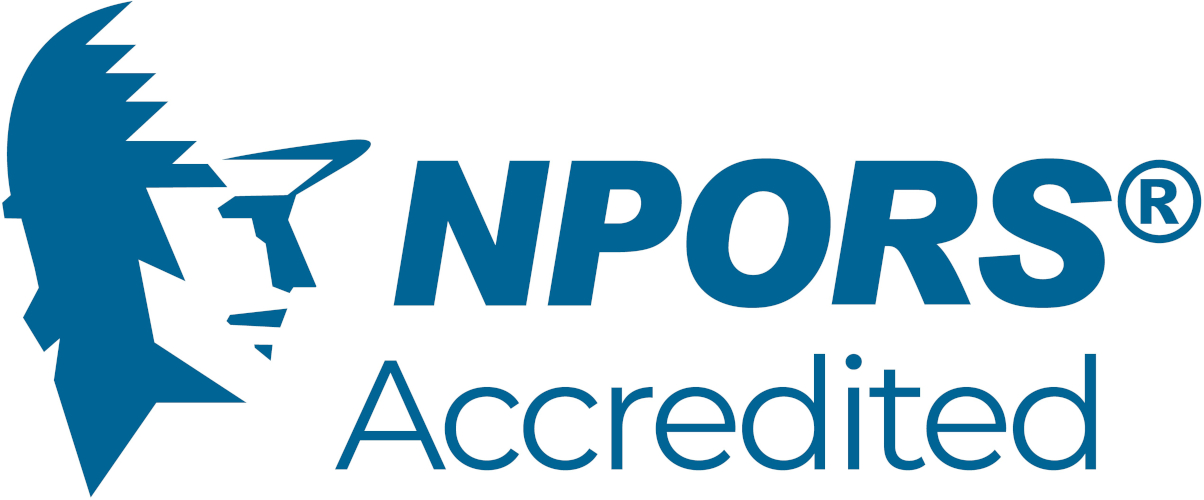Here are the theory test questions for A73 Plant and Vehicle Marshaller.
During the theory test you'll be asked a maximum of 40 questions.
Please note that your paper will include all the questions we have marked here with an asterisk *. In addition you will have a random selection of the other questions that are not marked here with an asterisk.
These questions will appear on every A73 paper
Describe the SIX actions the marshaller should undertake when a delivery vehicle arrives on site to be unloaded at a different area. (3 marks)*
Name FIVE items that should be found within a traffic management plan. (5 marks)*
Name FIVE proximity hazards that can occur when plant or vehicles are travelling and manoeuvring on a site. (5 marks)*
A random selection of these questions will appear on each A73 paper
Where a site is divided by a public highway and a plant/vehicle crossing on the public highway is being set up, name THREE aspects that need to be taken into account. (3 marks)
a) In principle, what is the main responsibility of the plant and vehicle marshaller and
b) who remains responsible for ensuring the safe movement of the plant or vehicle? (2 marks)
If a delivery vehicle needs to be reversed onto the public highway, when can a marshaller legally stop traffic on the highway? (1 marks)
Before being asked to marshall plant or vehicles within a new or unfamiliar work area, what does the marshaller need to undergo? (2 marks)
Name FOUR possible causes where the marshaller’s capabilities could be exceeded? (4 marks)
When a marshalling operation for vehicle movements is being planned, list in the order of importance, the FOUR stages that should be taken into account (e.g. what is the first consideration of any planning, then the second stage if the first stage is not achievable etc.) (4 marks)
What TWO actions should be taken if an unexpected delivery vehicle appears within an area controlled by a marshaller? (2 marks)
What is the purpose of a logistics or delivery plan? (2 marks)
List THREE methods or ways that site movement plans are conveyed to other workers. (3 marks)
How would a marshaller identify that there is a safe system of work in place? (2 marks)
Give FOUR reasons that may cause an item of plant to tip over sideways. (4 marks)
Other than the driver/operator,
a) state TWO places where information relating to the gross or overall weight of plant or vehicles can be found and
b) explain why it is important that the Plant and Vehicle Marshaller needs to know this information? (4 marks)
In terms of manoeuvring and travelling name TWO advantages that tracked plant have over a wheeled vehicle. (2 marks)
What should a marshaller consider when guiding road transport vehicles compared to site-based plant? (1 marks)
a) What should the marshaller check before they start to guide and assist an item of plant that is being repositioned?
b) what is the general rule for the positioning of the cab on a 360 degree slew type machine when travelling?
c) when would there be an exception to this rule? (3 marks)
If driver aids such as reversing cameras are fitted to the item of plant/vehicle, what TWO things should the marshaller establish before movements begin? (2 marks)
List FOUR factors that could cause a loss of vision to the plant/vehicle driver/operator. (4 marks)
Name THREE factors that could reduce the effectiveness of rear-view mirrors fitted to plant or vehicles. (3 marks)
In general,
a) what direction should an item of plant be travelled on a steep slope and
b) why?
Note: The tester may cite several types of plant as examples. (2 marks)
If an item of plant or vehicle is turning on a slope, what can possibly cause the machine to overturn? (3 marks)
If a delivery vehicle has to be unloaded on the public highway, what has to be in place ? (2 marks)
What is the minimum distance that plant and vehicles can be travelled or parked from the edge of an excavation? (2 marks)
What factors could affect the movement of plant or vehicles during wet weather compared to dry weather? (1 marks)
What are the advantages of implementing a one way traffic system? (2 marks)
Explain FIVE factors that could affect the integrity of an exclusion zone and safe movements within the zone. (5 marks)
What TWO things should be considered when selecting a place of refuge or safety within a designated manoeuvring area? (2 marks)
What should a marshaller and a plant/vehicle operator/driver establish prior to any movements of the machine? (1 marks)
The given traffic plan requires that plant and vehicles follow a certain route.
What first course of action should the marshaller take if the plan cannot be followed? (1 marks)
When using radio communication between a marshaller and driver/operator, apart from a common language, what THREE things should be considered when sending messages? (3 marks)
a) When would light sticks or torches be used and
b) how do they convey information to a driver/operator and
c) what is an advantage of using a light stick for manoeuvring purposes? (6 marks)
If the marshaller is guiding an item of plant or a vehicle near to the edge of an excavation/tipping zone for tipping a load, what control measures must they ensure are in place? (2 marks)
Name TWO things that a marshaller should check with the operator/driver before their machine transports a load across a site. (2 marks)
What checks must be taken if site conditions change overnight due to adverse weather? (1 marks)
When deciding to marshall a reversing vehicle, what TWO considerations should be made to the marshallers position? (2 marks)
If marshalling a vehicle in an area having limited light during hours of darkness/dusk, what would be the first main consideration? (1 marks)
Name THREE things that should be checked both prior to and during operations when guiding plant and vehicles on a brownfield construction site? (3 marks)
What should the marshaller take into account when positioning an item of plant which is able to slew, such as a 360 degree excavator or crane, in a confined area? (1 marks)
Before marshalling a reversing item of plant or vehicle into an enclosed space, what THREE things should be ensured before movements begin? (2 marks)
What procedure would a marshaller follow if an emergency vehicle e.g. ambulance needs to be directed to the place of the emergency? (2 marks)
If a tipping vehicle is to discharge a load near to power lines mounted on wooden poles and no goal posts are in place, what is the first course of action? (2 marks)
If a transporter is to unload an item of plant, identify THREE factors that the marshaller should consider in terms of the unloading area. (3 marks)
A load has just been delivered to a site on a vehicle. Before the securing/restraining gear securing the load is released, what should be ensured? (1 marks)
a) What should be considered before anyone unlatches and opens any tailgates to discharge a load and
b) before raising the body? (1 marks)
When receiving visiting delivery vehicles, what should a marshaller consider before directing them to the unloading place on the site? (1 marks)
Give THREE considerations when PPE for marshalling duties is being selected. (3 marks)
If assisting a plant operator to position and configure the item of plant, what should the marshaller take into account? (2 marks)
Before a marshaller approaches an item of plant or vehicle to relay movement instructions to the driver/operator, what TWO actions must be undertaken? (2 marks)
If the designated travel route becomes blocked or is unavailable due to deterioration in ground conditions,
a) what is the first course of action the marshaller should take and
b) why? (4 marks)
Name THREE things that can prevent a driver from seeing the marshaller when being guided by them. (3 marks)
When marshalling plant and vehicles in a given area, what should the marshaller anticipate? (1 marks)
State Two possible effects if plant and vehicles stray from or fail to stay on designated haul/access routes. (2 marks)
During a reversing activity, the marshaller notices that the driver/operator is not fully watching them and using other aids e.g. using the reversing mirrors.
What TWO actions should the marshaller take? (2 marks)
Whilst guiding a reversing item of plant or vehicle, the marshaller needs to reposition themselves to maintain eye contact with the operator/driver. Before repositioning themselves, what action must be taken? (1 marks)
If a delivery vehicle has to shunt backwards and forward when reversing into a site from the public highway, what danger could occur? (2 marks)
In what THREE circumstances should a marshaller need to inform a driver/operator to reduce their speed? (3 marks)
a) In what situation can barriers that are segregating a working area be remove and
b) when should they be replaced? (2 marks)
a) Name THREE things that would need to be reported to the supervisor as soon as they occur and
b) why should this be undertaken immediately? (5 marks)
Scenario 1a:
The blind spots or area that the operator is unable to see when been driven forwards (diagrams A & B). (2 marks)
Scenario 1b:
The blind spots or area that the operator is unable to see when reversing (diagrams A & B). (2 marks)
Scenario 1c:
Where the marshaller should be positioned when guiding the machine to an edge to discharge the load (diagram B). (2 marks)
Scenario 1d:
The area outside of the operators natural field of vision or peripheral vision when they are facing forward and driving in a forward direction. (diagram B). Note: this assumes that the operator is not turning their head or body. (2 marks)
Scenario 2a:
The blind spots or areas where the operator has limited or no visibility. (2 marks)
Scenario 2b:
The operator’s natural zone of visibility when driving forward. (2 marks)
Scenario 2c:
Where the marshaller should be positioned when guiding the machine when being driven forward. (2 marks)
Scenario 3a:
The blind spots or area where the operator has limited or no visibility. (2 marks)
Scenario 3b:
The danger area of the marshaller. (2 marks)
Scenario 3c:
Where the marshaller should be positioned when guiding the machine. (2 marks)
Scenario 4a:
The blind spots or area where the operator has limited or no visibility. (2 marks)
Scenario 4b:
Where the marshaller should be positioned when guiding the reversing machine. (2 marks)
End of questions for A73 Plant and Vehicle Marshaller


